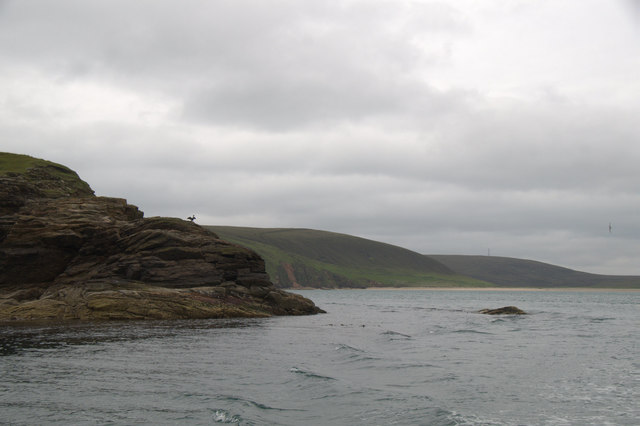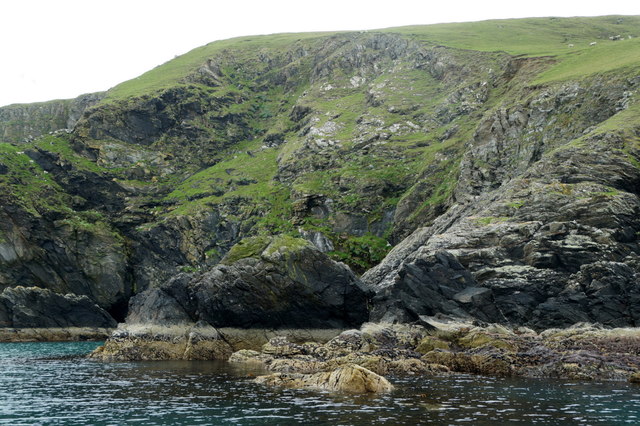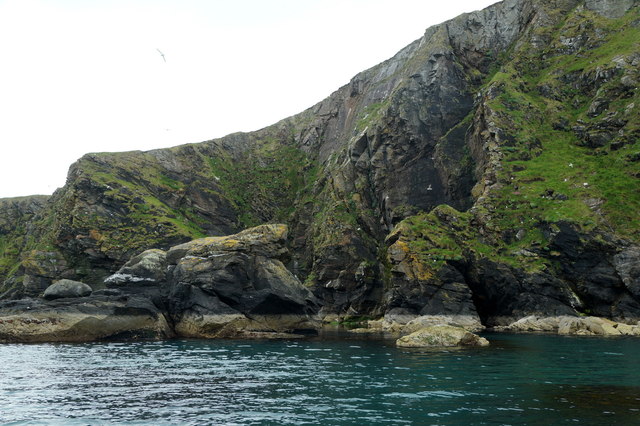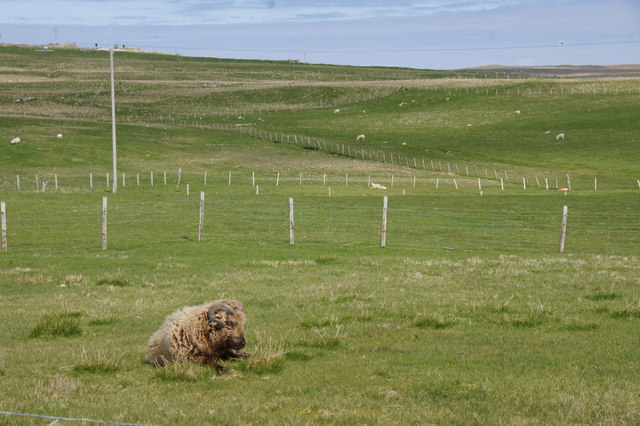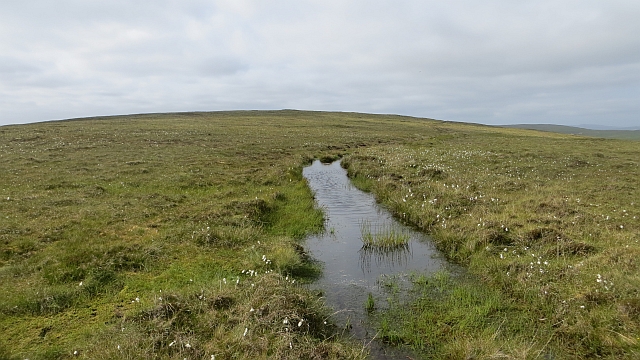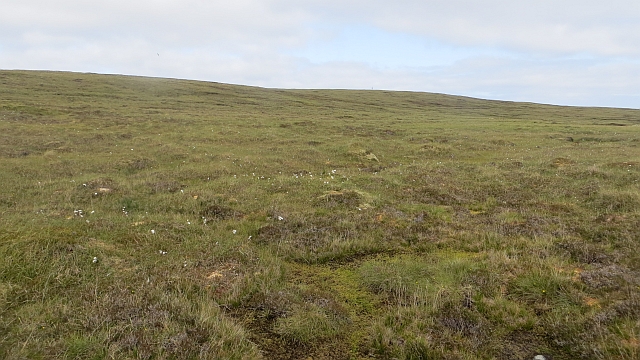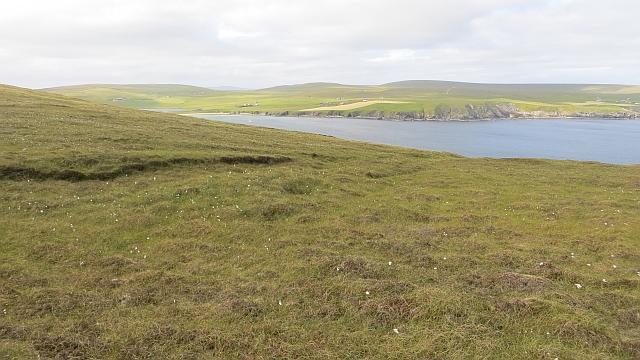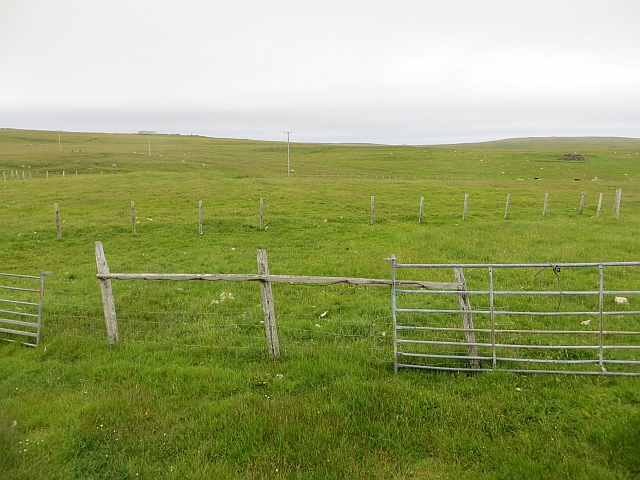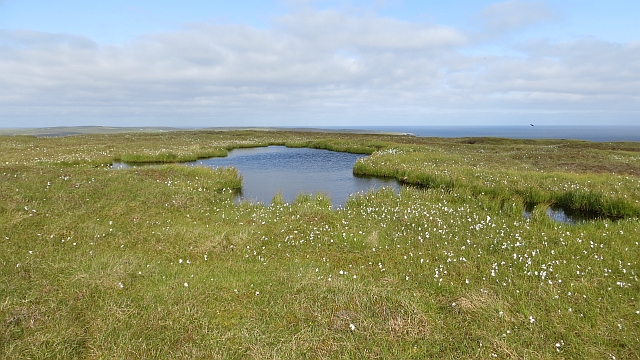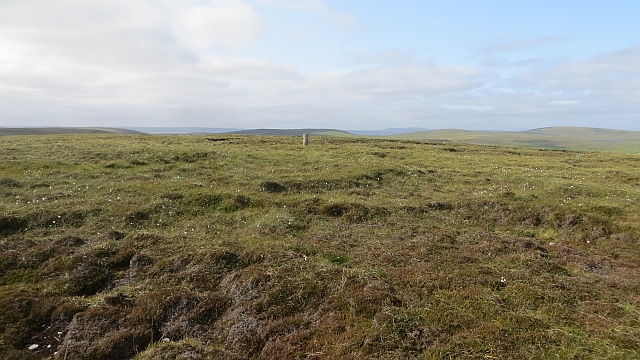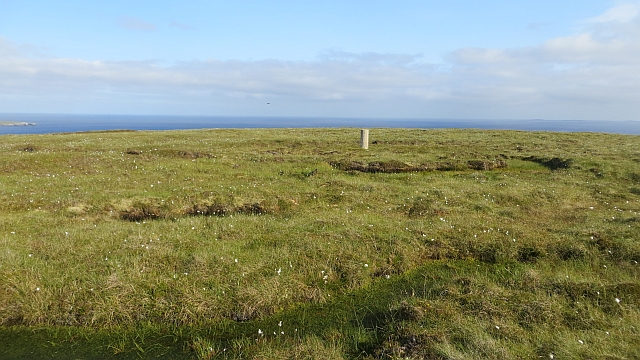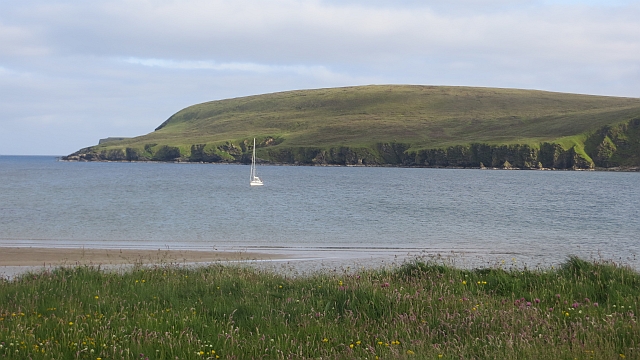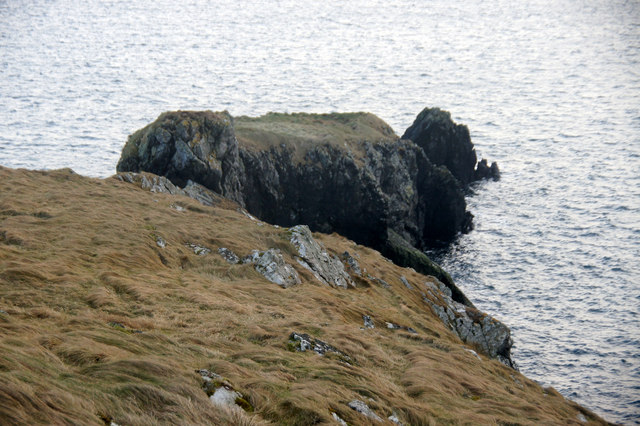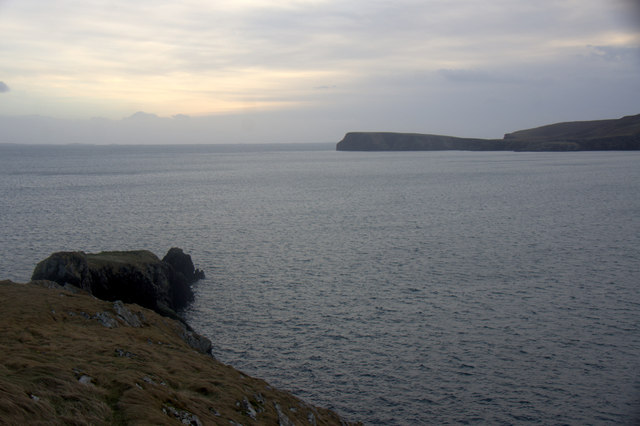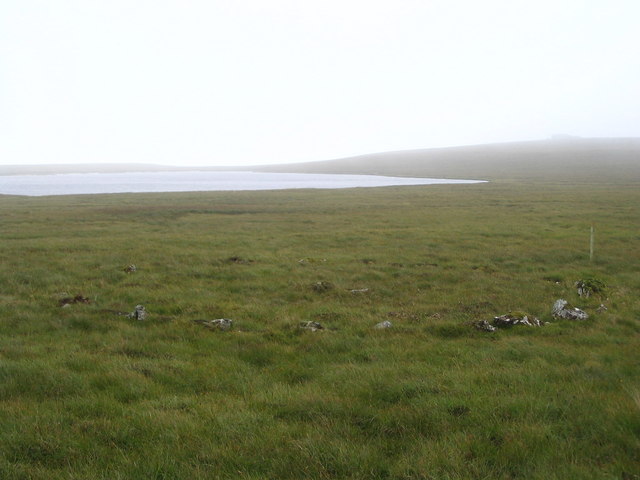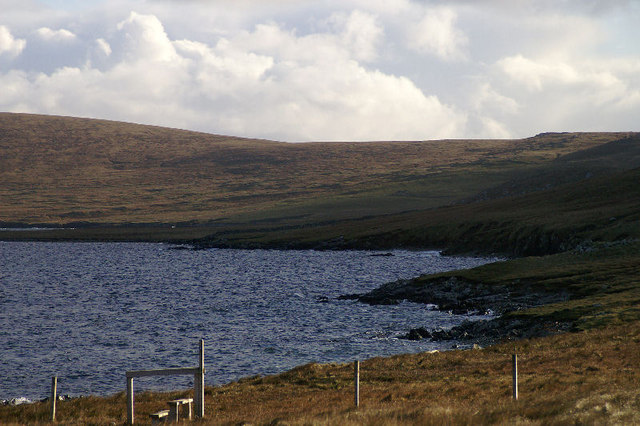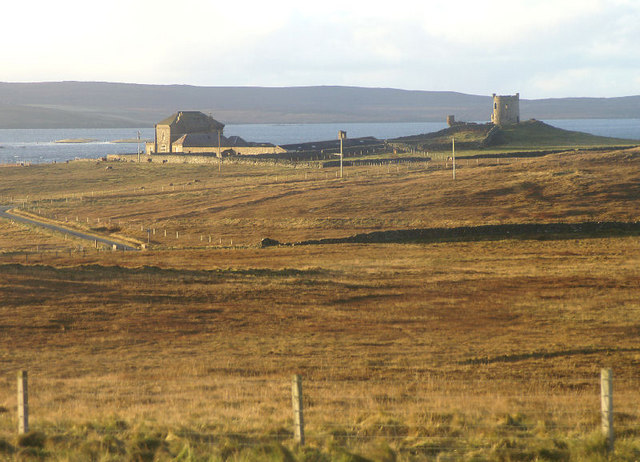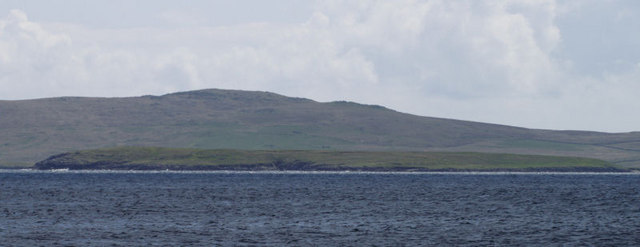The Taing
Coastal Feature, Headland, Point in Shetland
Scotland
The Taing
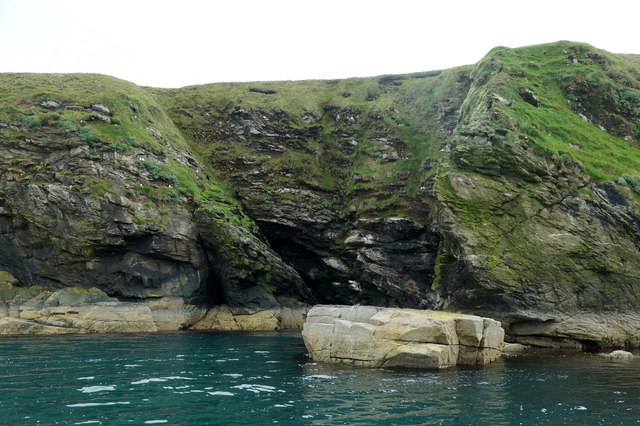
The Taing is a prominent coastal feature located in Shetland, an archipelago in Scotland. It is a headland, also known as a point, that extends out into the North Sea, offering breathtaking views of the surrounding landscape.
Situated on the western coast of mainland Shetland, The Taing is characterized by its rocky cliffs, which rise high above the crashing waves below. The headland is composed of ancient rock formations, displaying layers of sedimentary rock that have been shaped by millions of years of erosion.
At the top of The Taing, there is a narrow strip of land that provides a vantage point for visitors to witness the raw power of the sea. The panoramic views from this spot are truly awe-inspiring, with the vast expanse of the North Sea stretching out before the eyes, and the distant horizon seemingly endless.
The area surrounding The Taing is rich in biodiversity, with various species of seabirds nesting along the cliffs. It is also a popular spot for wildlife enthusiasts, who come to observe seals, dolphins, and even occasional sightings of whales. The rugged beauty of the headland attracts hikers and photographers alike, who are drawn to the dramatic scenery and the opportunity to capture the essence of Shetland's coastline.
Overall, The Taing is a remarkable coastal feature in Shetland, offering visitors a chance to immerse themselves in the natural beauty and power of the North Sea.
If you have any feedback on the listing, please let us know in the comments section below.
The Taing Images
Images are sourced within 2km of 60.590335/-0.88344877 or Grid Reference HU6190. Thanks to Geograph Open Source API. All images are credited.
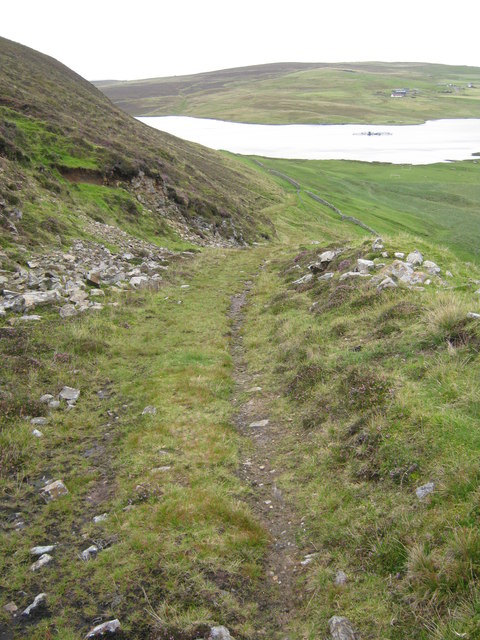
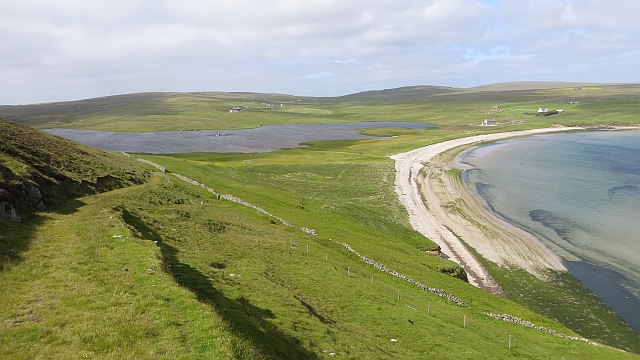
The Taing is located at Grid Ref: HU6190 (Lat: 60.590335, Lng: -0.88344877)
Unitary Authority: Shetland Islands
Police Authority: Highlands and Islands
What 3 Words
///brotherly.numeral.elated. Near Houbie, Shetland Islands
Nearby Locations
Related Wikis
Fetlar
Fetlar (Scots: Fetlar) is one of the North Isles of Shetland, Scotland, with a usually resident population of 61 at the time of the 2011 census. Its main...
Haltadans
Haltadans, also known as Fairy Ring or Haltadans stone circle, is a stone circle on the island of Fetlar in Shetland, Scotland. This site is a ring of...
Funzie Girt
Funzie Girt (; Scots: Funyie Girt "Finns' dyke") is an ancient dividing wall that was erected from north to south across the island of Fetlar in Shetland...
Brough Lodge
Brough Lodge is a 19th-century Gothic mansion on Fetlar, one of the Shetland Islands, in northern Scotland. Built by the Nicolson family, who were responsible...
Urie Lingey
For other islands with similar names, see Linga (disambiguation) Urie Lingey is one of the Shetland Islands. It is between Fetlar and Unst, and Yell is...
Hamars Ness
Hamars Ness is a headland on the island of Fetlar in Shetland, Scotland. The name is from the Old Norse Hamarsnes meaning "craggy headland". A ro-ro ferry...
Hascosay
Hascosay (Scots: Hascosay; Old Norse "Hafskotsey") is a small island lying between Yell and Fetlar in the Shetland Islands, Scotland. == Geography and... ==
Sound Gruney
For other islands with similar names, see Gruney (disambiguation) Sound Gruney is one of the Shetland islands. It lies about 1.5 kilometres (0.93 mi)...
Nearby Amenities
Located within 500m of 60.590335,-0.88344877Have you been to The Taing?
Leave your review of The Taing below (or comments, questions and feedback).
